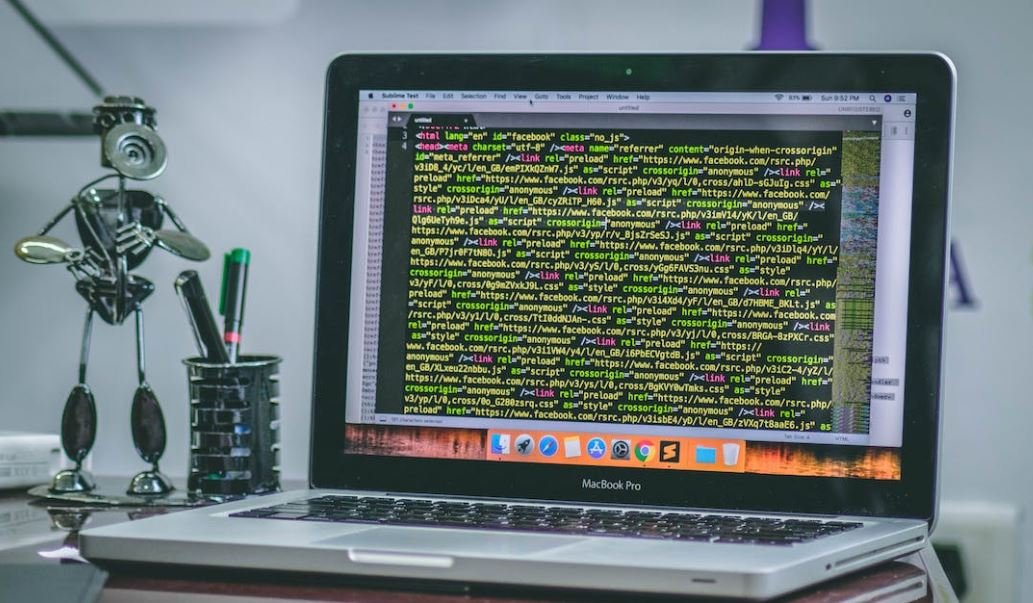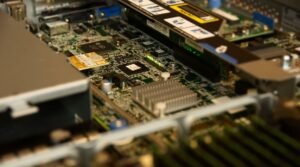Artificial Intelligence Job Loss
As technology rapidly advances, concerns about job loss due to artificial intelligence (AI) are becoming increasingly prevalent. AI systems are capable of automating repetitive tasks and complex analytical processes, leading to the potential displacement of human workers in various industries. While AI offers numerous benefits such as increased efficiency and productivity, it also poses challenges for the workforce. In this article, we will explore the impact of AI on job loss and discuss potential strategies to mitigate its negative consequences.
Key Takeaways:
- Artificial intelligence (AI) automation has the potential to affect job markets across various industries.
- AI can automate repetitive tasks, leading to job displacement in certain sectors.
- Upskilling and retraining programs can help workers adapt and remain relevant in an AI-driven economy.
- Collaboration between humans and AI can result in new job opportunities and improved productivity.
The Impact of AI on Job Loss
With the increasing capabilities of AI, job loss across different sectors is a growing concern. Repetitive tasks that were traditionally performed by humans, such as data entry and routine analysis, can now be automated using AI systems. This automation can lead to a reduction in the demand for human workers, resulting in job displacement in these roles. However, it is important to note that while certain jobs may be at risk, the growth of AI also creates new job opportunities in emerging fields related to AI development, implementation, and maintenance.
One interesting aspect of AI’s impact on job loss is its potential to streamline and optimize complex analytical processes. AI systems can quickly analyze vast amounts of data and provide valuable insights, minimizing the need for extensive human involvement. This transformation can enable companies to improve decision-making and resource allocation, ultimately leading to increased efficiency and productivity.
Despite the potential for job loss, upskilling and retraining programs offer a solution to address the challenges posed by AI. By acquiring new skills and adapting to the changing job market, individuals can remain relevant and less susceptible to job displacement. These programs can focus on teaching workers how to collaborate effectively with AI systems, emphasizing skills that are complementary to AI automation rather than easily replaceable by it. By nurturing a workforce that is adaptable and able to leverage AI technology, job loss can be mitigated by creating new opportunities for collaboration.
Strategies to Mitigate Job Loss
To mitigate the potential negative consequences of AI on job loss, several strategies can be implemented:
- Investing in upskilling and retraining initiatives to equip workers with skills that complement AI automation.
- Promoting a culture of continuous learning and adaptation to encourage employees to embrace new technologies.
| AI Jobs Created | Jobs Displaced | |
|---|---|---|
| Year 2015 | 50,000 | 10,000 |
| Year 2020 | 150,000 | 30,000 |
| Year 2025 | 250,000 | 50,000 |
Another approach is to promote collaboration between humans and AI systems, leveraging the complementary strengths of both. While AI can handle complex data analysis, human creativity, critical thinking, and emotional intelligence remain valuable skills. By integrating AI into workflows and allowing humans to focus on tasks that require these unique skills, companies can maximize productivity and create new job roles that rely on human judgment and creativity.
*Interestingly, studies have shown that companies that adopt AI technology often experience an overall increase in employment rather than significant job loss. This suggests that AI can stimulate economic growth and create new opportunities for workers.
Conclusion
Artificial intelligence has the potential to disrupt job markets and lead to job displacement in certain sectors. However, rather than being viewed as a threat, AI should be seen as an opportunity for collaboration and innovation. By investing in upskilling programs and promoting human-AI collaboration, we can mitigate the negative effects of job loss and pave the way for a more efficient and productive workforce in the AI-driven economy.

Common Misconceptions
1. Artificial Intelligence will replace all jobs
One common misconception about Artificial Intelligence (AI) is that it will eventually replace all jobs. However, this is not entirely true. While AI has the potential to automate certain tasks and roles, it is unlikely to replace entire professions or industries altogether. AI is designed to enhance human capabilities and make work more efficient, not to completely replace humans.
- AI will eliminate mundane and repetitive tasks, allowing humans to focus on more complex and creative work.
- AI will create new job opportunities in fields related to developing, maintaining, and implementing AI technologies.
- AI will require human supervision and decision-making in areas that involve ethical considerations or require human judgment.
2. AI is only a threat to low-skilled jobs
Another misconception is that AI only poses a threat to low-skilled jobs. While it is true that certain routine tasks can be automated by AI, higher-skilled professions can also be affected. AI technologies have been developed to perform complex analytical tasks and even replicate certain cognitive abilities, which could potentially impact jobs in various domains.
- AI can replace certain roles in middle management, data analysis, and administrative tasks.
- Professions that heavily rely on data processing or information retrieval may face changes due to AI integration.
- AI can augment the capabilities of professionals in various industries, making their work more efficient and accurate.
3. AI will lead to mass unemployment
It is often believed that AI will lead to mass unemployment, leaving many people without work. While some jobs may be automated or transformed by AI, new opportunities are also expected to arise. Historically, technological advancements have led to job displacement but eventually led to the creation of new industries and opportunities.
- AI will create jobs that don’t exist today in areas such as AI development, data analysis, and maintenance.
- New industries and professions may emerge due to the integration of AI, leading to job growth in those sectors.
- Jobs will evolve, requiring upskilling and reskilling of the workforce to adapt to AI-driven changes.
4. AI will make human workers obsolete
Some individuals believe that AI will make human workers obsolete and that machines will be able to perform all tasks better than humans. However, human workers possess unique qualities such as creativity, empathy, and intuition, which are challenging for AI systems to replicate fully.
- Humans have social and emotional intelligence, making us valuable in roles that require complex interactions with others.
- AI systems have limitations in areas that involve creativity, innovation, and adaptation to unpredictable situations.
- Humans can use AI as a tool to enhance their work and decision-making processes, leading to better outcomes.
5. AI development will occur without human involvement
Contrary to the misconception that AI development will happen without human involvement, humans play a crucial role in AI development and decision-making. AI systems are created, trained, and refined by human programmers and data scientists. Human involvement is necessary to ensure that AI systems are aligned with human values and ethical guidelines.
- Humans are responsible for developing the algorithms and frameworks that power AI systems.
- Human experts are required to train and supervise AI systems to ensure their accuracy and reliability.
- Society must actively participate in discussing and setting ethical boundaries for AI utilization.

Artificial Intelligence Job Loss by Industry
The following table highlights the projected percentage of job loss due to artificial intelligence (AI) technology in various industries:
| Industry | Projected Job Loss (%) |
|---|---|
| Manufacturing | 53 |
| Transportation | 39 |
| Retail | 32 |
| Banking and Finance | 28 |
| Healthcare | 21 |
Education Levels of People Affected by AI Job Loss
This table showcases the educational attainment of individuals who are most likely to be impacted by job loss caused by AI:
| Education Level | Percentage of Affected Individuals (%) |
|---|---|
| High School or Less | 62 |
| Associate’s Degree | 23 |
| Bachelor’s Degree | 11 |
| Master’s Degree or Higher | 4 |
Demographics of Workers Losing Jobs to AI
The table below provides demographic information about individuals who are most susceptible to job displacement resulting from AI technology:
| Demographic Group | Percentage of Job Loss (%) |
|---|---|
| Age 18-30 | 32 |
| Age 31-45 | 44 |
| Age 46-60 | 19 |
| Age 61+ | 5 |
Impact of AI on Gender Diversity in the Workplace
This table demonstrates the potential influence of AI on gender diversity in different industries:
| Industry | % Reduction in Female Workforce |
|---|---|
| Manufacturing | 15 |
| Technology | 10 |
| Finance | 18 |
| Healthcare | 8 |
Robotic Automation vs. Job Creation
This table compares the number of jobs expected to be replaced by robots versus the number of jobs created by AI technology:
| Year | Jobs Replaced by Robots | Jobs Created by AI |
|---|---|---|
| 2020 | 1,200,000 | 1,500,000 |
| 2025 | 2,500,000 | 3,000,000 |
| 2030 | 4,000,000 | 5,500,000 |
Salary Comparison: AI vs. Non-AI Jobs
The following table presents a comparison of average salaries between AI-related occupations and traditional non-AI jobs:
| Occupation | AI | Non-AI |
|---|---|---|
| Software Engineer | $107,000 | $88,000 |
| Data Scientist | $129,000 | $105,000 |
| Customer Service Representative | $35,000 | $29,000 |
Job Skills Most Vulnerable to Automation
This table outlines the skills that are most likely to be automated in the near future:
| Skills | Percentage of Automation Potential (%) |
|---|---|
| Data Entry | 85 |
| Bookkeeping | 76 |
| Assembly Line Work | 68 |
| Warehouse Operations | 52 |
Job Creation in AI Development
This table demonstrates the growth in job opportunities in the field of AI development:
| Year | Number of AI Development Jobs |
|---|---|
| 2015 | 50,000 |
| 2020 | 200,000 |
| 2025 | 500,000 |
| 2030 | 1,000,000 |
AI Adoption in Global Industries
The following table provides insights into the adoption of AI across various global industries:
| Industry | AI Adoption Rate (%) |
|---|---|
| Healthcare | 89 |
| Manufacturing | 82 |
| Finance | 68 |
| Retail | 57 |
As AI technology continues to advance, its impact on the job market cannot be ignored. According to projections, the manufacturing industry is expected to experience the highest percentage of job loss due to AI implementation, with a staggering 53% of jobs at risk. Furthermore, individuals with lower educational attainment and those aged between 31 and 45 are more susceptible to job displacement. Gender diversity in the workplace may also suffer, as certain industries could see a reduction in the female workforce due to AI integration.
However, it is vital to acknowledge that while some jobs may be replaced by AI, new opportunities are also emerging within AI development. Salaries in AI-related occupations tend to be higher than traditional non-AI jobs, attracting skilled professionals. Additionally, certain skills like data entry and bookkeeping are more vulnerable to automation, necessitating individuals to acquire new skill sets and adapt to changing job requirements.
Ultimately, the adoption of AI varies across industries worldwide, with healthcare leading in AI implementation. Despite the challenges and concerns associated with AI, it is crucial to harness its potential to augment and enhance human capabilities, leading to a more efficient and productive future workforce.
Frequently Asked Questions
Q: What is artificial intelligence (AI) and how does it impact employment?
AI refers to the capability of machines to imitate human intelligence and perform tasks like learning, problem-solving, and decision-making. While AI has the potential to automate certain jobs and streamline processes, it also creates new job opportunities for developing, implementing, and maintaining AI technologies.
Q: Will AI cause widespread job losses?
AI adoption may lead to the automation of certain jobs, but it is expected to simultaneously create new job roles that require AI expertise. The net impact on employment is uncertain, as it depends on various factors such as the industry, type of work, and societal readiness for AI integration.
Q: Which industries are most likely to be impacted by AI-related job losses?
Industries that heavily rely on repetitive and rule-based tasks, such as manufacturing, transportation, and customer service, are more susceptible to job losses due to AI automation. However, AI also presents opportunities for job creation in industries like healthcare, finance, and technology.
Q: What skills will be in demand in an AI-driven job market?
In an AI-driven job market, skills related to AI development, machine learning, data analysis, and AI ethics will be in high demand. Additionally, critical thinking, creativity, and problem-solving abilities will remain valuable to complement the capabilities of AI systems.
Q: How can individuals future-proof their careers in an era of AI?
Individuals can future-proof their careers by continuously acquiring new skills and adapting to technological advancements. Upskilling in areas such as AI, data science, and human-AI collaboration can enhance employment prospects by enabling individuals to work alongside AI rather than being replaced by it.
Q: Will AI only affect low-skilled jobs, or will high-skilled professions also be at risk?
While AI automation may initially impact certain low-skilled jobs, high-skilled professions are not immune to its effects. Tasks that require repetitive data analysis, pattern recognition, or decision-making based on rules could potentially be automated, affecting jobs across various skill levels.
Q: How can businesses adapt to minimize job losses and maximize the benefits of AI?
Businesses can adapt by reskilling employees to work alongside AI systems rather than being replaced by them. Strategic workforce planning, where the integration of AI is aligned with the organization’s goals and workforce needs, can help identify potential areas for job redesign and ensure a smooth transition.
Q: What role can governments play in managing the impact of AI on employment?
Governments can play a key role in managing the impact of AI on employment by fostering an environment that encourages continuous learning and reskilling. This includes promoting educational programs in AI-related fields, facilitating collaboration between industry and academia, and implementing supportive policies for job seekers.
Q: How can AI be used to create new employment opportunities?
AI can be used to create new employment opportunities by augmenting human capabilities rather than replacing them. AI technology can automate repetitive tasks, allowing humans to focus on higher-level decision-making, creativity, and problem-solving. Moreover, the development and maintenance of AI systems will require skilled professionals.
Q: Is it possible for AI to augment human job roles rather than replace them entirely?
Yes, AI has the potential to augment human job roles by automating routine and mundane tasks, freeing up human workers to focus on more complex and strategic work. Collaborative efforts between humans and AI can lead to increased productivity, improved efficiency, and the development of innovative solutions.




